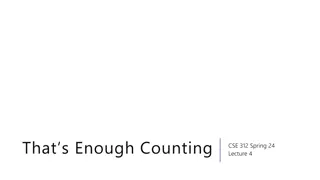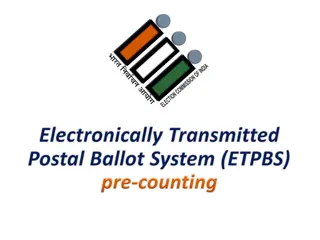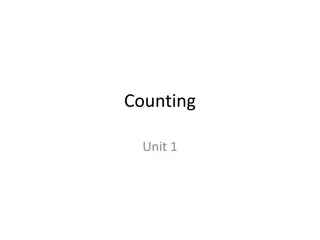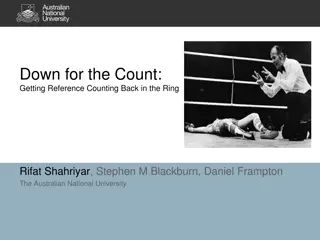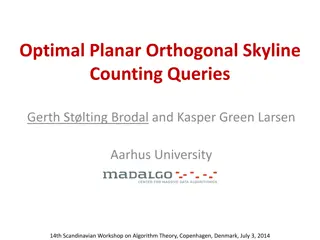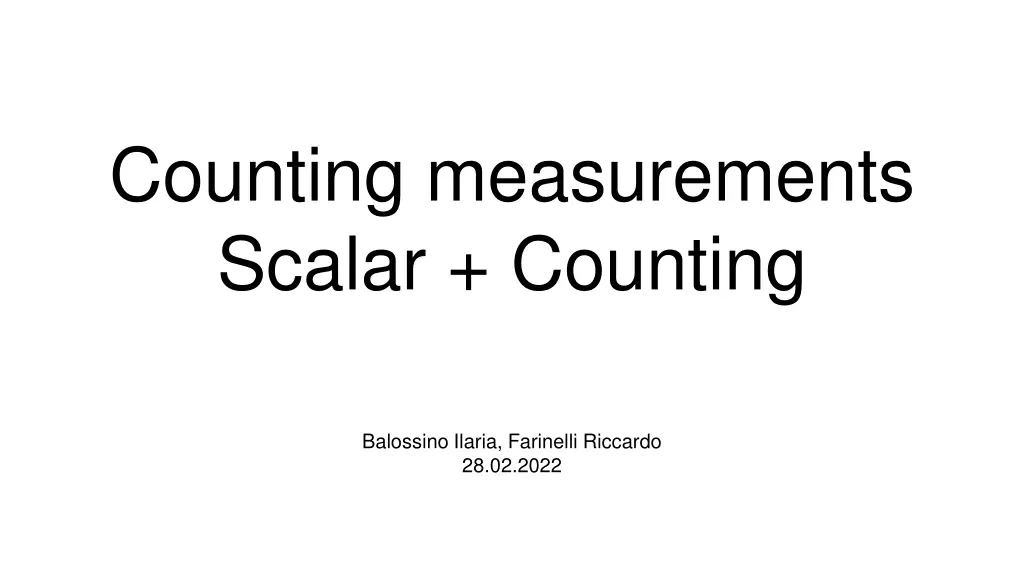
Measurements and Analysis of Counting Scalar Data with Picoscope
Explore the detailed process of measuring and analyzing counting scalar data using Picoscope software. Discover the results obtained from different setups and configurations, along with the summary measurements and features of the Picoscope.
Download Presentation

Please find below an Image/Link to download the presentation.
The content on the website is provided AS IS for your information and personal use only. It may not be sold, licensed, or shared on other websites without obtaining consent from the author. If you encounter any issues during the download, it is possible that the publisher has removed the file from their server.
You are allowed to download the files provided on this website for personal or commercial use, subject to the condition that they are used lawfully. All files are the property of their respective owners.
The content on the website is provided AS IS for your information and personal use only. It may not be sold, licensed, or shared on other websites without obtaining consent from the author.
E N D
Presentation Transcript
Counting measurements Scalar + Counting Balossino Ilaria, Farinelli Riccardo 28.02.2022
Setup 2
Analysis Picoscope A software threshold is imposed on the reconstructed data to run the counting with the picoscope 3
Summary measurements Countig + Scalar @ Nominal rate (758 Hz/cm2) Countig + Scalar @ effective rate (624 Hz/cm2) Planar @ 50 mV thr and 1000 gain = 2.19 +- 0.05 Grooved @ 50 mV thr and 1000 gain = 2.61 +- 0.06 Planar @ 50 mV thr and 1000 gain = 2.67 +- 0.05 Grooved @ 50 mV thr and 1000 gain = 3.17 +- 0.06 Countig + Picoscope @ Nominal rate (758 Hz/cm2) Countig + Picoscope @ Nominal rate (758 Hz/cm2) Planar @ 50 mV thr and 1000 gain = 2.14 +- 0.05 Grooved @ 50 mV thr and 1000 gain = 2.82 +- 0.05 Planar @ 50 mV thr and 1000 gain = 2.60 +- 0.05 Grooved @ 50 mV thr and 1000 gain = 3.43 +- 0.05 8



